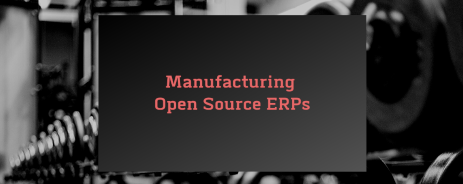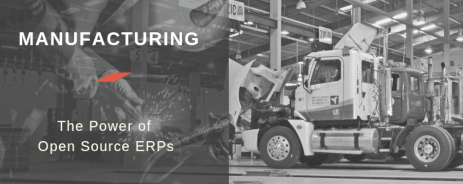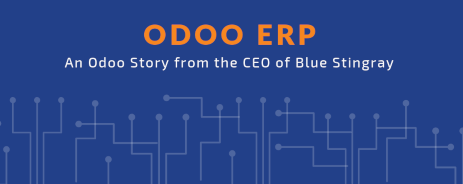
The Importance of Open Source ERPs for American Manufacturers
Enterprise Resource Planning (ERP) solutions continue to grow with leading manufacturers. ERPs allow data to be managed and distributed across every function of an enterprise. This data is used to improve manufacturing, distribution, human resources, finance, and any other facet of a business. By tying all departments together, a “source of truth” is created to avoid data duplication and maintain data integrity. ERP systems are becoming a critical component of any size manufacturing business and American manufacturing companies are adopting ERPs quickly.
At Blue Stingray, we’ve managed projects for Fortune 500 companies that include Kohler, Pepsi, and TransAmerica. We witnessed first-hand the power of implementing open source platforms in manufacturing. Toyota, Hyundai, and Allied Steel all rely on an open source ERP to run their daily processes. Blue Stingray specializes in migrating companies of all sizes to more affordable solutions by leveraging open source software.
What Is An Open Source ERP?
One thing to note about the word “enterprise” is that it’s often misread as meaning a large global business. Enterprise, in the context of an ERP, is any business that relies on more than one process to operate. ERPs are very commonly used in large manufacturing companies, but medium to small manufacturers see similar benefits by implementing them.
ERP systems are built around a common database that houses data in a single, defined data structure to normalize data across an entire enterprise. This core data is then connected with all business processes and departments. As data and processes are fully integrated, businesses can align departments more effectively, improve workflows, and create significant bottom-line savings.
Examples of business benefits:
- Improved insight using real-time information and reporting
- Reduced operational costs by streamlining business procedures and best practices
- Increased collaboration from users sharing the same data for contracts, purchase orders, and more
- Efficiency gains through a shared user experience across all business functions
- Consistent data infrastructure across an entire company to unite front and back offices
- Risk reduction with improved data integrity
- Reduced operational costs through integrated uniform systems
Open source software already has a strong foothold in business, so it was expected to see ERP and customer relationship management (CRM) platforms move to open source. Open source platforms allow for easier customization and integration with a manufacturer, as the source code can be directly customized to fit their needs. Moreover, customization and implementation of an open source ERP costs significantly less compared to traditional solutions.
As a manufacturer continues to grow, so will their processes and infrastructure. An open source solution allows for easy modification to the ERP, making sure that as a business grows, their ERP can grow with them.
Why Are American Manufacturers Making The Switch?
Cost of implementing traditional ERPs was too much for mid-level and small manufacturers. The biggest driver for implementing open source ERPs is to utilize the power of an ERP system without spending millions of dollars to get started.
Better customization leads many companies to choose open source. When a company wants to add a customization to their ERP solution, they can create it internally or through a company that specializes in ERP customization, like Blue Stingray. If they were to use a traditional ERP, they would need to go through a vendor, their internal IT team, and typically an external consultant. This causes customizations to take a significant amount of time, and if a vendor declines the customization, the manufacturer has no way to create their own.
Simple scalability is important to growing manufacturers, and an open source solution is the best way to ensure an ERP will scale. If a company fails to realize that software needs to upgrade and grow with the company, it can cause major disruptions. Open source is simple to upgrade without disruptions. It is ready to be customized, as needed, to fit a company’s needs for scaling.
Excellent code may seem like it wouldn’t pair well with “low cost,” but in this instance, it does. Open source solutions are built on a foundation of code that has been reviewed by countless independent developers. Because companies have access to the source code, they can also audit their code internally for quality. This is significantly better than closed source ERP solutions where IT employees have no access to the code.
The Bottom Line On Open Source ERPs
Open source ERPs provide the same benefits as traditional ERPs, but have additional advantages. Open source platforms are more flexible for customization, scale better with growing manufacturers, are built on a foundation of quality code, and cost significantly less to implement. If you use more than one application for your daily operations, want to centralize your data, or provide a uniform software experience for your entire company, an open source ERP makes an incredible difference.
If you are interested in learning more about open source ERPs, contact us for a free demo and consultation.




